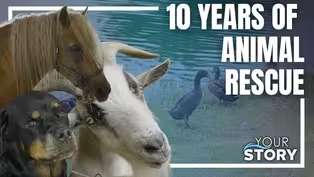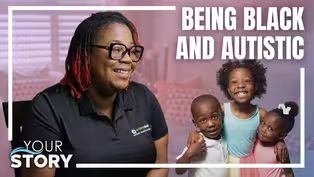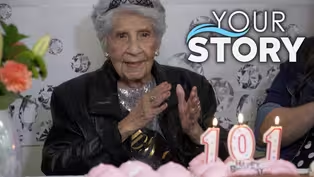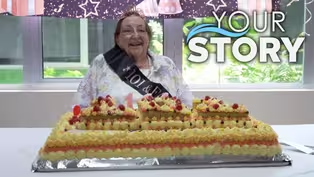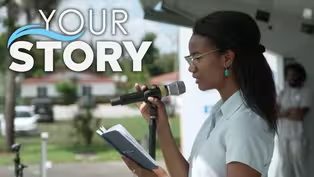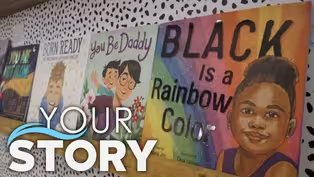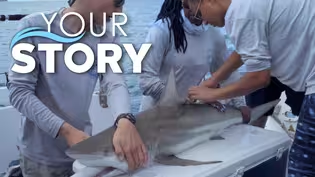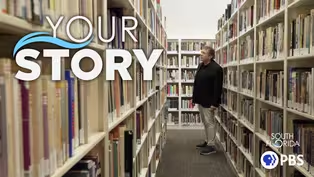South Florida PBS Presents
The Forgotten History of Miami’s First Black Police Officers
Special | 10m 26sVideo has Closed Captions
Beyond Overtown’s vibrant street art and cultural spots lies an overlooked piece of Miami history.
In 1944, the first five black patrolmen were sworn in which led to the creation of this precinct, the only one of its kind in the nation. Learn how this forgotten part of history is now making an impact on the future of Miami policing.
Problems playing video? | Closed Captioning Feedback
Problems playing video? | Closed Captioning Feedback
South Florida PBS Presents is a local public television program presented by WPBT
South Florida PBS Presents
The Forgotten History of Miami’s First Black Police Officers
Special | 10m 26sVideo has Closed Captions
In 1944, the first five black patrolmen were sworn in which led to the creation of this precinct, the only one of its kind in the nation. Learn how this forgotten part of history is now making an impact on the future of Miami policing.
Problems playing video? | Closed Captioning Feedback
How to Watch South Florida PBS Presents
South Florida PBS Presents is available to stream on pbs.org and the free PBS App, available on iPhone, Apple TV, Android TV, Android smartphones, Amazon Fire TV, Amazon Fire Tablet, Roku, Samsung Smart TV, and Vizio.
Providing Support for PBS.org
Learn Moreabout PBS online sponsorshipMore from This Collection
South Florida PBS digital series showcasing South Florida people and organizations.
How Barky Pines Animal Rescue in Loxahatchee is Saving Lives!
Video has Closed Captions
Go behind the scenes with Barky Pines Animal Rescue. (5m 17s)
A Black Family’s Journey with Autism
Video has Closed Captions
Meet Maria Davis-Pierre and her neurodiverse family. (7m 40s)
Meet 101-Year-Old Doctor Gladys Lopez
Video has Closed Captions
An avid reader, traveler and doctor, Gladys Lopez has lived many lives in many places. (4m 37s)
Meet 101-Year-Old Miamian Mercedes Garcia
Video has Closed Captions
Mercedes Garcia’s resilient story is like that of so many Miamians. (4m 20s)
Finding Your Voice with Art Prevails Project
Video has Closed Captions
Art Prevails Project based in South Florida, offers creative outlets for the community. (5m 9s)
Celebrating Diverse Children’s Books at Rohi’s Readery
Video has Closed Captions
Rohi’s Readery is a children’s bookstore in West Palm Beach. (4m 22s)
Minorities in Shark Sciences (MISS) is Making Waves
Video has Closed Captions
Meet four black female marine scientists that are making waves in shark science. (8m 40s)
Exploring One of the Largest LGBTQ+ Archives and Libraries
Video has Closed Captions
We profile Stonewall National Museum and Archives, one of the largest of it's kind. (8m 51s)
Providing Support for PBS.org
Learn Moreabout PBS online sponsorship[Lt. McKay] This is the best kept secret in City of Miami.
There are so many people who say#they# didn't know this building was#here.
[Terrance] This was where Black people actually had an opportunity to stand and really#assume responsibility for their community.
Here at the City of Miami Black Police# Precinct Courthouse Museum, I feel like this## building in itself now that it's even a# museum and it's only one that's in its## nation too that exists, and that's# only due to the push and the effort## of retired law enforcement officers who# worked out of this building.
They saw a## need to not have this building be# demolished and turned into a parking lot.
[Lt. McKay] I worked out of the precinct, this building# here, for about five or six years.
I became a## policeman on a dare.
My buddy had seen in the#papers that the City of Miami was hiring Black police#officers, so he came to me and said, "Let's go down and#sign up."
I said, "Not me, no, no way."
So he says, "Nah,#you just chicken."
"No, I'm not."
So I went on to become#a police officer.
[Terrance] Lieutenant Archie McKay is a gem to not just to this precinct, but to our community#as a whole.
I think he is the oldest living City of Miami police officer and now at 98, you know,#he'll come in and he'll offer special, very, very#special tours.
[Lt. McKay] My purpose to coming mostly was to# to give tours to people and that was a joy, a#pleasure.
Now all I want to do is to get the word out# through the media, through whatever way you can that this museum stands here# with information about negro policing.
[Terrance] So when you come into the museum, you# typically always will start at the booking## area of the museum, which gives individuals an# opportunity to hear about the influence and## how this building came to be.
Then you walk into# what we call our roll call area of the museum,## which is really where those Black officers had# their administrative desk, where they would put## their uniforms.
They had lockers.
You will# also see the jail that is original to the## building and then you come to the courtroom,# which was presided over by Judge Lawson Thomas.
This institution, this building, this# space, these stories represent somewhat## of a challenging time for Miami and# across the world.
Segregation was at an# all-time high in all aspects of the United# States, preventing Blacks from having the same## equal opportunities as whites and the City of# Miami in 1896 decided they wanted to become## a chartered city and there were not enough# white men who were interested in chartering## the City of Miami at the time.
They went to the# Black communities and they got 162 of them## to commit to signing the charter for the# city to become the City of Miami.
As a result## of that, many promises were made.
Many were not# kept.
Black communities were not feeling safe## they were not being protected.
It was the work# and effort of Dr Ira P. Davis and several other## community activists who stood up and said,# listen, we want to be able to have officers## that are working in our communities, that look# like us, that trust us, that want to protect us.
In 1944, the City of Miami swore in# their first five.
By 1950, we saw the five## officers turn into 51 officers and this# building was erected as the only one that## really carried the conversation of both booking,# jail and courthouse.
Although this building was## considered the Black Police Precinct, it was still#supervised by whites.
[Lt. McKay] Back then, they didn't train#Black police officers.
It was OJT, on-the-job training.
That's when I learned that part of the job was to interact with people.
That's when I# really fell in love with the work.
We only worked in the colored section of the town.
At that particular#time, we only had three areas that we lived in.
That was Coconut Grove area, Overtown area and# Liberty City.
We could only arrest Black people.
We couldn't arrest no white people, unless there# was a felony committed in our presence.## Courtrooms were segregated.
We had our own courtroom here in#this building and you had a Black judge.
[Terrance] It wasn't uncommon that you would see officers walking the#beat, you know, that means walking around the street.#You might see them riding horses, or riding#a bike.
You know, they weren't given a car right#away.
They didn't see a car until the late 1950s.#They were given a bicycle to ride, so things like#that really made these officers more personal.# You know, one of the key things and I love to## bring up when I'm providing tours is that these# officers were not allowed to wear their uniforms outside of duty, so a lot of that made# them humanize.
I often ask individuals like## Lieutenant McKay and Chief Dixon and Otis Davis,# who are still with us, what was it like, you know,## living in an Overtown during that time# and they would always remind me that we knew## about the segregation, but we didn't really# have to endure it or experience it at the level## unless we went outside of our community because# everything we needed was within our community.
[Lt. McKay] Overtown was very familiar# with me because I lived in Overtown.
It made the job easier because you#knew people, you knew the suspects'#parents and we could talk to them, and if they#were willing, they would either bring them#in or have them come in.
[Terrance] And so from#1950 to 1963, these Black officers really, truly served the community in the best way# they knew, right, in the best way they could.
Here at the museum, I have made a personal# effort to remain connected to the City of Miami#Police, whether it be through the reserves# or through activities and events and so as## you have new officers come in and go through# the academy, they are essentially indirectly required to go to this building, so they can# learn about the history, 'cause often many, if# not the majority of the new current# officers that we do have coming on the force, would not have been able to serve out of the# white precinct.
They would have been here in## this precinct, you know, because they're either# Latino or they're from another country.
And so## having a relationship with the police department,# we're trying to create a way that we are looked## at as almost like a pre-screening for# individuals who are interested in going into## the practice of law enforcement or becoming# lawyers.
When people come to this museum, I'm not asking them to reminisce about the past, but# I'm asking them to reflect on how the past can# influence the future decisions that we make.
Can we# consider getting back to a place where people who# are patrolling and protecting our communities and# serving our communities are people who have vested# interests in the communities that# they're patrolling and protecting and serving?
[Lt. McKay] I love this place.
I do whatever I can# to make this place a historic building forever.
Support for PBS provided by:
South Florida PBS Presents is a local public television program presented by WPBT
